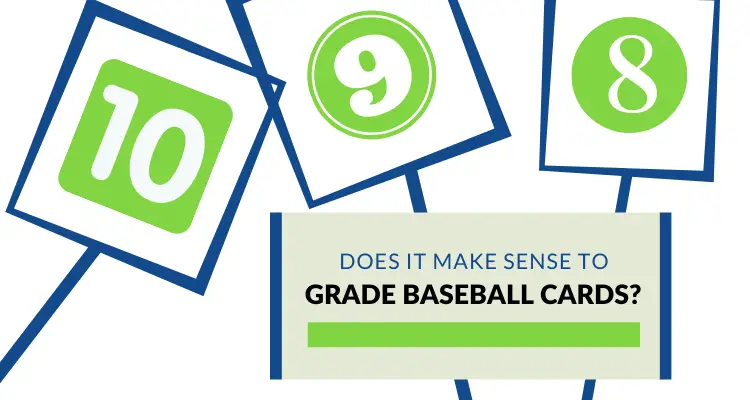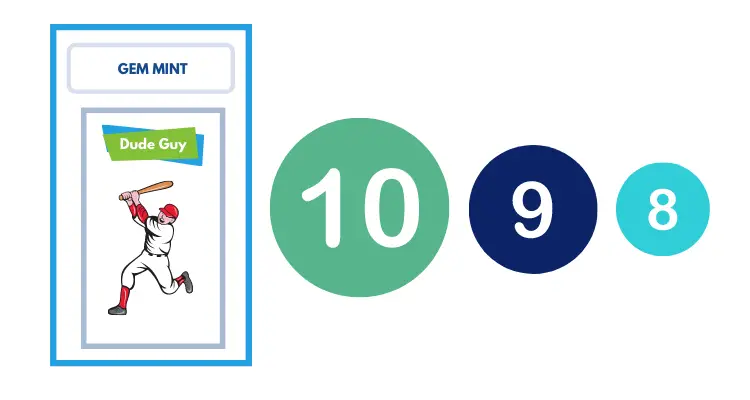 Ryan Barone (@ballcardgenius on TikTok, Card Expert) is a lifelong member of the hobby. He has been quoted in PSA Magazine, and his content has regularly been mentioned in “Quick Rips” (the Topps RIPPED Newsletter) and across other hobby publications. Join his 8,600 followers on TikTok! hello@ballcardgenius.com; Last Time Ago LLC dba Ballcard Genius.
Ryan Barone (@ballcardgenius on TikTok, Card Expert) is a lifelong member of the hobby. He has been quoted in PSA Magazine, and his content has regularly been mentioned in “Quick Rips” (the Topps RIPPED Newsletter) and across other hobby publications. Join his 8,600 followers on TikTok! hello@ballcardgenius.com; Last Time Ago LLC dba Ballcard Genius.
Affiliate Disclosure: This post contains affiliate links. As I am a part of the eBay Partner Network and other programs, if you follow these links and make a purchase, I’ll receive commission. As an Amazon Associate, I earn from qualifying purchases.
The way PSA card grading works is you fill out a submission form by choosing your service level (turnaround time) and adding your card’s details. You then package and mail your card to PSA. Once the card is received, PSA begins processing 2-3 days later. From there, the card goes through a handful of grading stages including grading, assembly, and QA. Once the process is complete, the card is mailed back.
Is that it? Well, regardless of industry, sometimes the simple answers elude us. We don’t always need all of the ins and outs of something unknown. Just a little peak behind the curtain to quench our thirst for knowledge. Then, when we are ready, we will dive into the heavy stuff.
PSA card grading is a lot like that.
I just submitted two more cards for grading, and it couldn’t have been easier. It wasn’t scary or overwhelming. It took 10 minutes. I’ve done it before, and have a pretty good handle on how it all goes down. I’ll now wait per the description above.
No, but I’d like to. The process seems a little intimidating. Sounds silly, im sure. I know beckett and psa are the way to go, but the amount of money to spend to get a card graded is not what I’d expected.
— Diesel (@diesel198230) September 14, 2021
That said, I know there are some lingering questions, and roadblocks that prevent people from grading cards because they don’t have the answers.
What is being graded?
Card grading accomplishes two things. It ensures the card is authentic, which is more or less table stakes, but then it also assigns it a condition grade.
Successful crossover BGS 9 to PSA 9 of my 05 Gold Kobe refractor. Previous subs were 8.5 centering 9.5 corners and 9 edges and surface. pic.twitter.com/2cO7Cb2uO9
— CaliforniaCardCollector (@CaliforniaCard) March 3, 2021
This grade is determined by the card’s corners (how sharp they are), edges (how clean are they), surface (are there any blemishes), and centering (is the card shifted to the left or right, or up or down)?
What is a service level?
The service level is one of the main decisions you’ll make when choosing to grade your cards. It’s essentially the price you’ll pay to grade each card, and how quickly you can expect the card to be graded. With PSA, the service levels include:
| Service Level Name | Price Per Card | Declared Value | Turnaround Time |
|---|---|---|---|
| Value Bulk | $10 | N/A | 20 business days |
| Value | $20 | Under $500 | 20 business days |
| Value Plus | $25 | Under $1,000 | 15 business days |
| Regular | $50 | Under $2,500 | 10-15 business days |
| Express | $100 | Under $5,000 | 5 business days |
| Super Express | $200 | Under $25,000 | 2 business days |
| Walkthrough | $600 | Unlimited | 1 business day |
What is declared value?
Declared value is an owner’s estimated worth of a card after it has been authenticated and graded by PSA. It’s a reflection of the potential value of a card based on its condition, rarity, and market demand.
Owners declare their perceived value of the card as a means of insurance against any loss or damage that may occur during the grading and encapsulation process.
I need to send some off to PSA myself. I’ve never done it before. I don’t understand the pricing on their webpage. Am I correct in my understanding that the amount you pay for grading, depends on the value of the card? The “declared value” thing confuses me.
— RealJamesGrove (@RealJamesGrove) March 24, 2023
So, while it might be tempting to declare a lower value, the card may not be adequately insured against loss or damage during the shipping and handling process.
Not to mention that if you submit a card at, for example, the value level which is a declared value of less than $500, but the actual value is much greater, you can be upcharged to the next service level. I’m also assuming you’d have to pay more in shipping insurance, but I’m not entirely sure on that piece.



